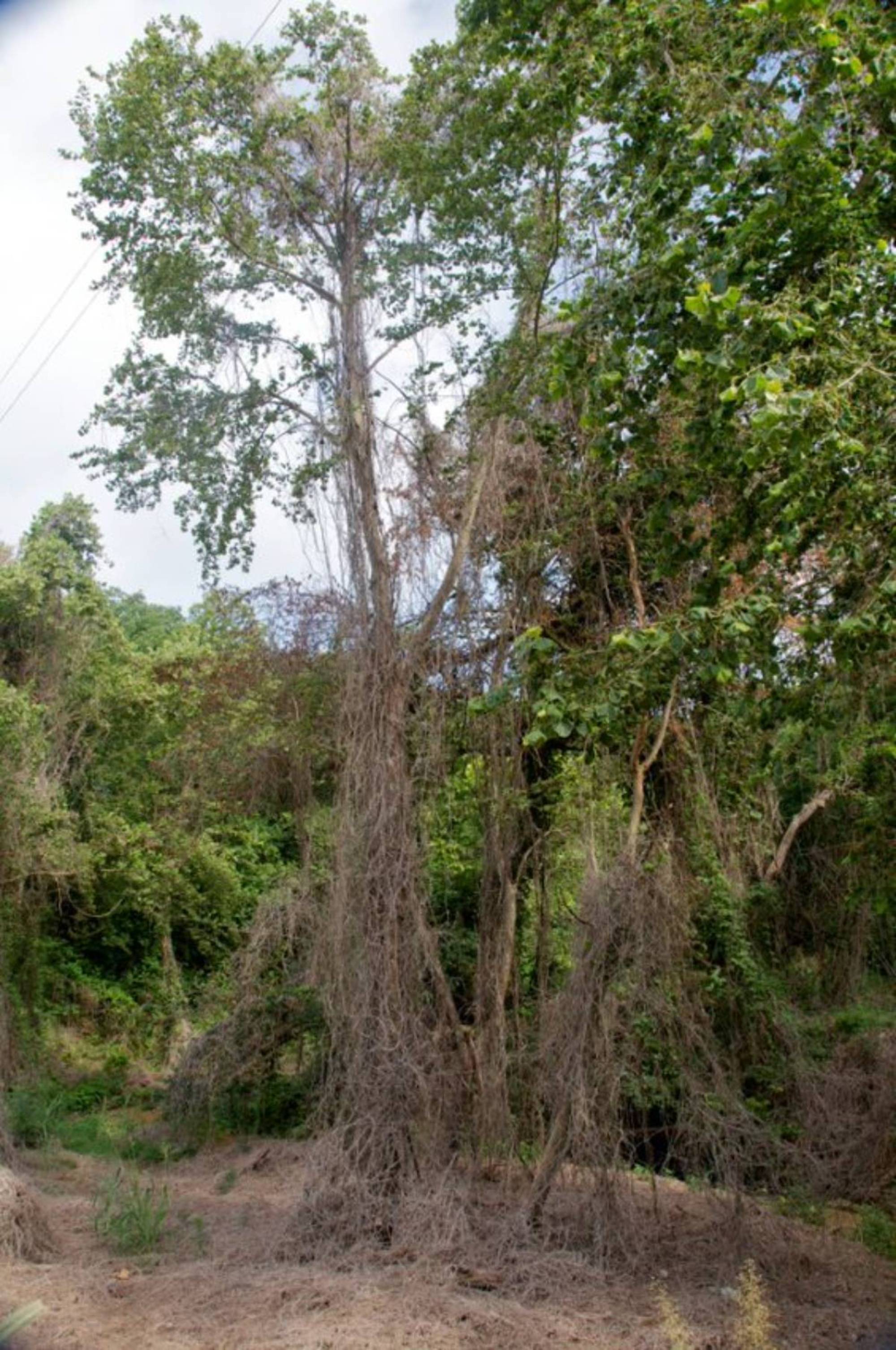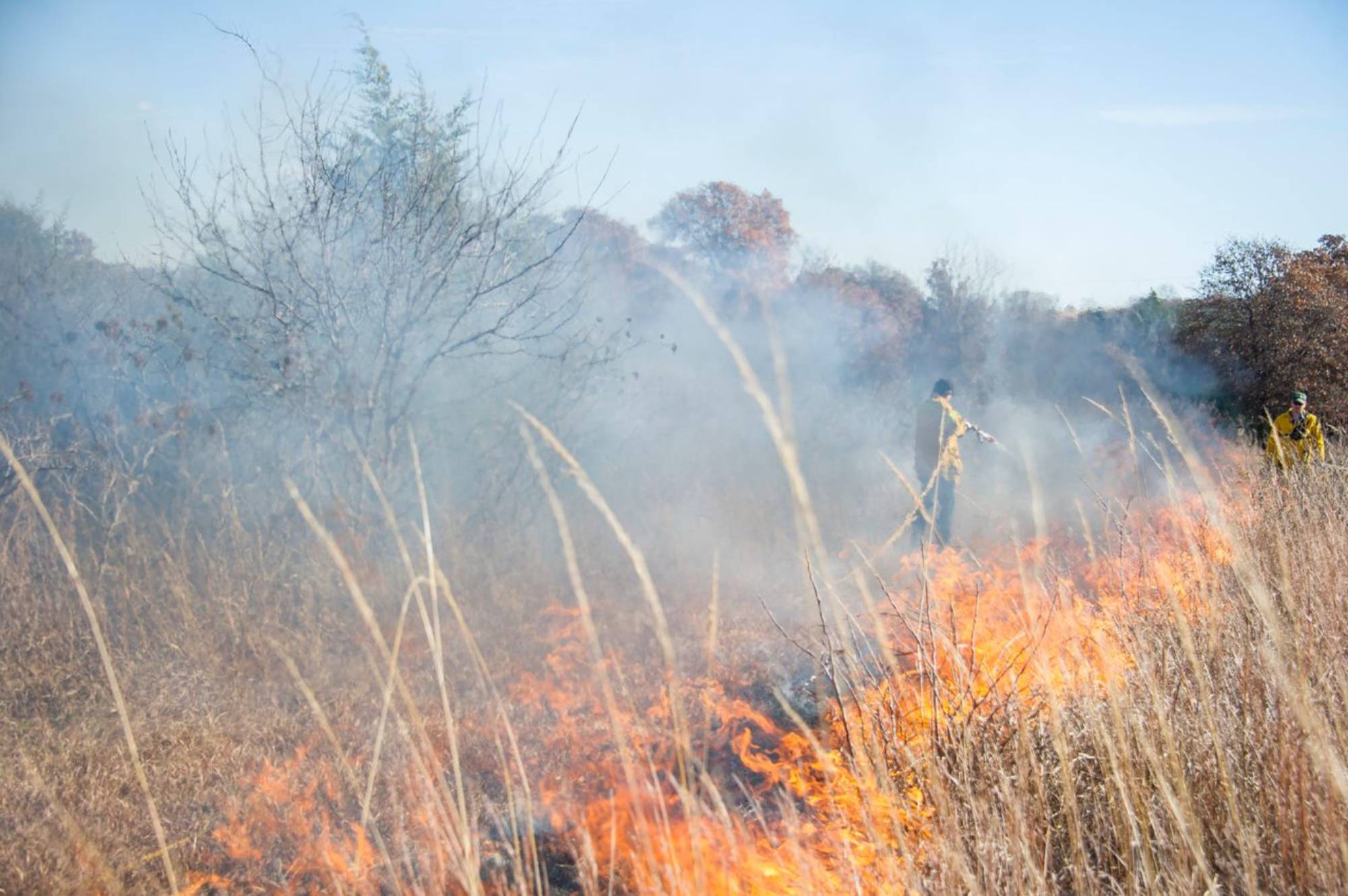Conserving and Promoting Wise Use of Soil, Water and Other Natural Resources
Research faculty and graduate students in the Department of Natural Resource Ecology and Management at Oklahoma State University are studying a variety of invasive species and climate change topics to help maintain or restore the health and sustainable function of agroecosystems, including invasive grasses, animals and soil microbiomes.
For example, faculty investigated the effects of climate variability and management on the diameter growth of shortleaf pine (Pinus echinata) in southeastern Oklahoma. They also studied the effects of tree harvest, prescribed fire and 31 years of climate variability on the understory as well as the aboveground, net and primary productivity for ecosystems ranging from mature forests to grasslands.
Research is being conducted on the invasive species of Old World bluestem (a type of grass), kudzu (a perennial vine), feral swine and Eurasian earthworms. Scientists are studying how they influence soil health, plant species composition and plant forage quality in the Southern Great Plains rangelands.
Research conducted by Gail Wilson, a Sarkey’s Endowed Professor in the Department of Natural Resource Ecology and Management, showed that while native grass species survival was not improved following inoculation with native soil, survival of late-successional forbs (weeds) was significantly improved when inoculated with native soil. Research results showed that the successful restoration of native prairie species is linked to belowground microbial communities and that transplanting mycorrhizal (fungal) plants can improve restoration success following removal of non-native species.

Kudzu is an aggressive and non-native vine that causes ecological damage and reduces biodiversity. It can have multiple economic consequences, such as loss of timber value and volume. Professor Omkar Joshi and colleagues used infestation locations in Oklahoma to estimate the natural and anthropogenic (human-created) spread rate of kudzu in the next five years, as well as the potential economic loss in the forest product industry.
Data revealed that current kudzu populations are already established in Oklahoma forests, and within five years, total industry output could be reduced by $167.9 million, which would influence 780 jobs in the most extreme case scenario. These research results could act as an incentive for appropriate management practices and plans to be implemented.
In their research on feral hogs, Professor Sue Fairbanks and graduate student Kelly Boyer, in conjunction with the Noble Research Institute in Ardmore, found that surface soil damage by wild pigs (Sus scrofa) in pecan orchards and groves decreased the efficiency of pecan harvest by 34%. The damaged surface soil caused by the rooting behavior of the feral hogs caused interference with the harvest machine’s ability to collect the pecans due to rough surface soil.
Their research also provided an online calculator that pecan producers can use to calculate the amount of harvest lost and cost, based on the amount of pig damage, current pecan prices and other user-input parameters.

In all the research, herbaceous production was negatively related to tree dominance and litter accumulation and positively related to June precipitation and early and late growing season temperatures. The research also revealed that prescribed fire is critical to maintaining highly productive understories.
This research contributes to conserving our natural resources while also educating the world on the threats to our natural environment and what solutions can be offered to lessen such dangers. The OSU project is just one example of how OSU Ag Research is improving the quality of life for Oklahomans and those around the world.
